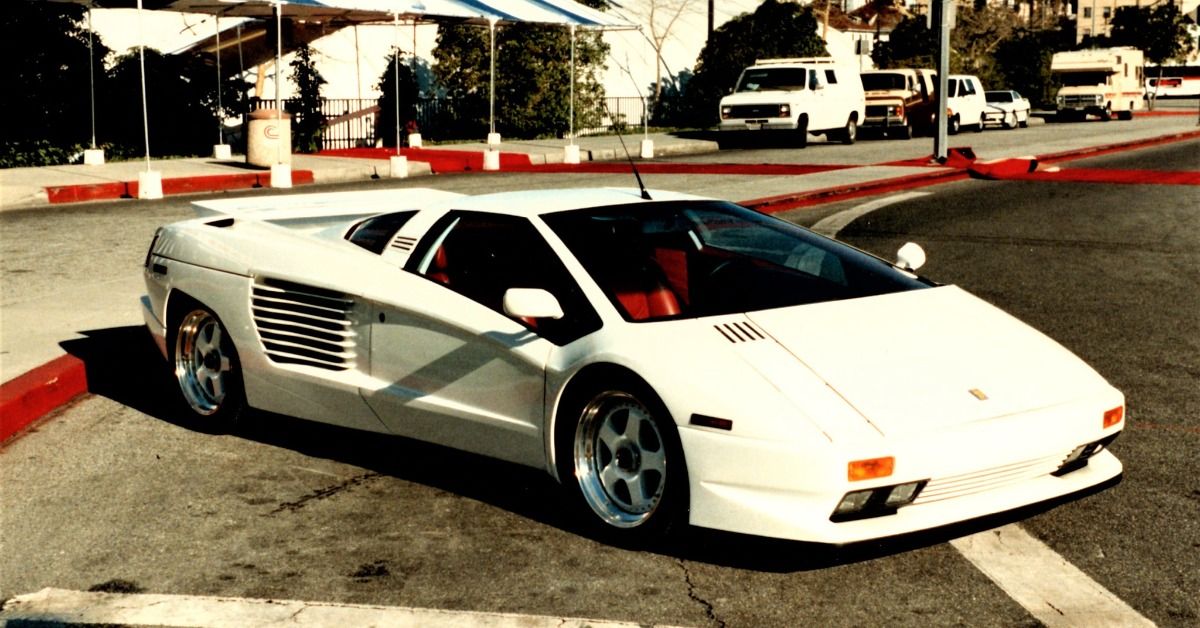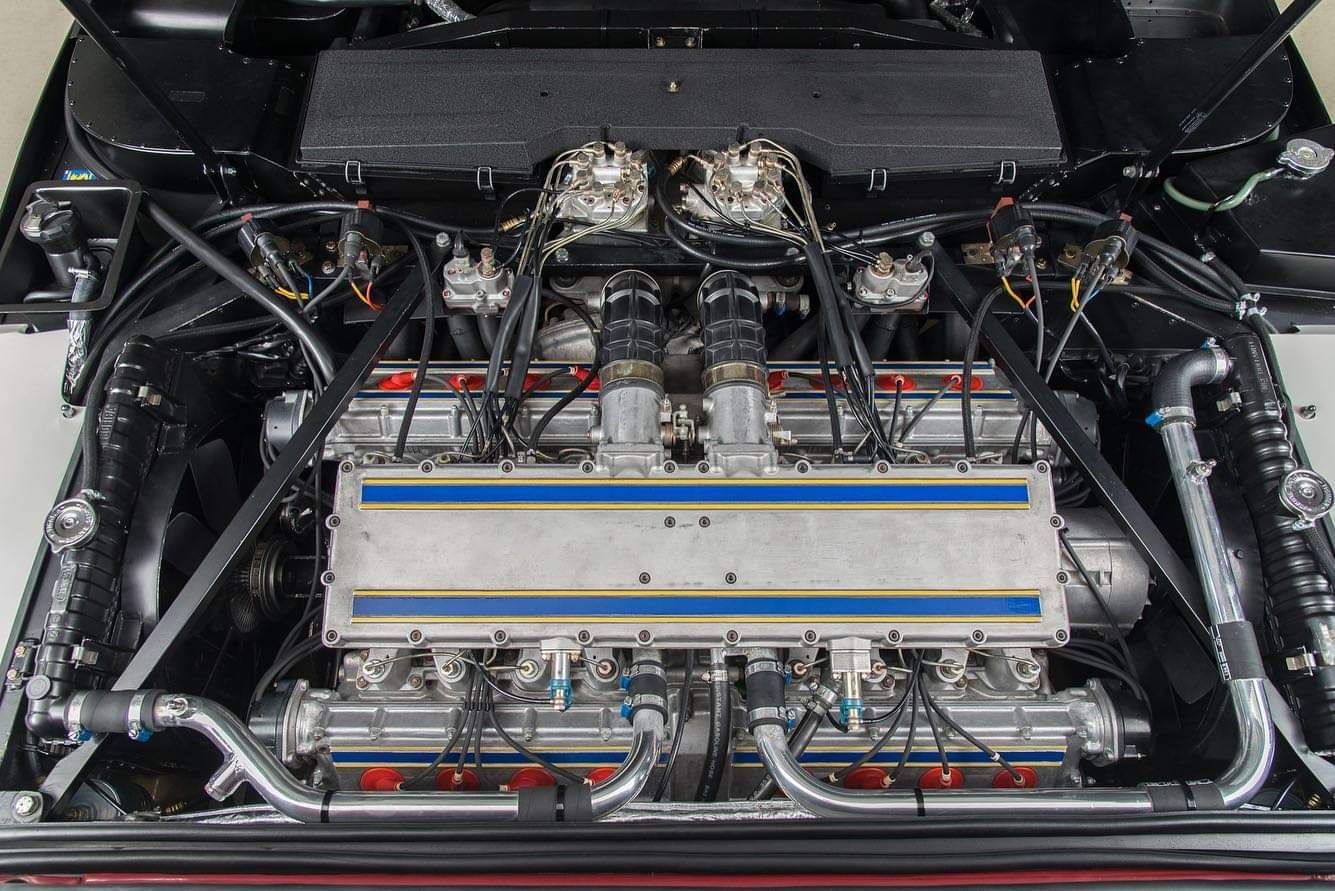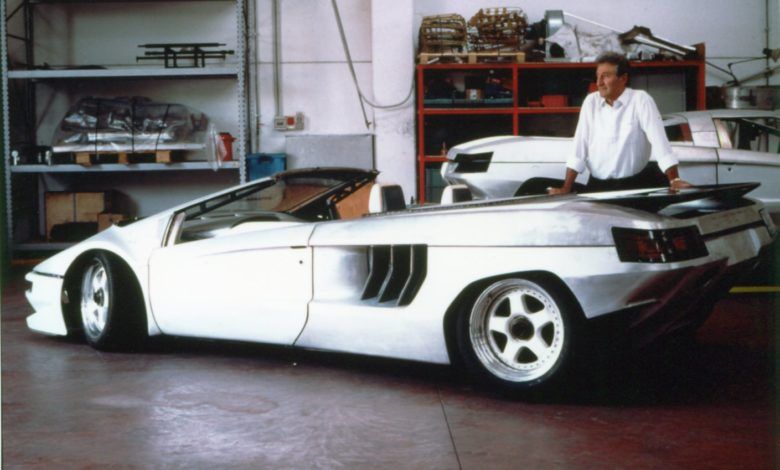On Wilshire Boulevard in Los Angeles, California, nestled between a hot yoga studio, and model management agency, sits a Lamborghini dealership. But not just any Lamborghini dealership. The location seems much too inconvenient for regular rich folk to bring their Lambo. Yet since its inception, the corner of Wilshire and Hamilton has been regularly packed with modern-day supercars.
The reason behind the success of this dealership is the same person responsible for linking Eddie Van Halen with Sammy Hagar: Claudio Zampolli. A former test-and-development engineer for Lamborghini, Zampolli is most infamously known as the tuner to every LA star during the ‘80’s and ‘90s. More recently, Zampolli has seen his legacy go through a midst of up and downs, ultimately landing on “genius engineer.”
For Zampolli is the mastermind behind one of the most mythical Supercars ever to be developed, the Cizeta V16T. Developed and built in the city of speed: Modena, Italy, the Cizeta may look like a caricature of a number of Italian classic Supercars; but with its rich history in Italian engineering (thanks to Zampolli’s poaching of Lamborghini’s best men at the time), the Cizeta must be the Supercar’s greatest “what could have been.” This is what makes the Cizeta V16T, one of the greatest Italian Supercars ever to be built.
The Transversely Mounted V16 Engine, Of Course
In a world where flat-plane V12s, and transversely-mounted V8s were the norm, the Cizeta sets itself apart with what possibly could be the greatest vehicle engine ever built for a production road car. Its 6.0L, transversely-mounted V16 engine. But god’s gift to motor engineering isn’t just two V8s mashed together, that would have been too easy for Zampolli. You see, Zampolli didn’t have any intentions of taking on Italy’s behemoths (Ferrari and Lamborghini), instead he wanted to leave his mark on the Supercar world.
He did so with his creation of the V16. Cast in all aluminum, the engine boasts an astounding 64 valves and eight overhead camshafts, a result of the cams being driven at the center of the engine block’s single casting.
Almost five-feet across, the one-piece cast engine was produced and developed in a secretive (no surprise there) Modena factory known for building prototypes. With its centrally located chain cam drivers, the engine’s cylinders are divided into two sections. Giving the appearance of two V8s mushed together, the V16T is anything but. Featuring a genuine firing order that is distinctly, V16, the engine is fed by two V8 fuel injection systems, quenching the thirst of the Cizeta’s 32 inlet valves.
But despite the massive size, the engine had been developed to rev high through its 64.5-millimeter short stroke, and a bore of 86 millimeters, allowing the V16 to produce 540-hp at a neck-jerking 8,000 rpm. With its 400 lb-ft of torque, the power band screams through at 6000 RPM, enough to easily take the Cizeta over 200 mph. An uncommonly rare feat of the time.
The Cizeta featured a final-drive gear ratio of 4.11:1, combined with its 8,500 rpm rev-limit, the V16 catapulted itself from 0-60 mph in as little as 4.3 seconds. When revved-out, the Cizeta reached 60 mph in its first gear!
Built By Enthusiasts, For Enthusiasts
One of the signifying reasons for Zampolli’s desire to develop such a special car? The lack of car enthusiasts building Italy’s Supercars. Although a seasoned Los Angeles veteran at the time, Zampolli understood there wasn’t a city that could support the development of the Cizeta, quite like Modena. Even going so far as saying, “Modena is the city of fast cars. You could not build a Rolls-Royce in Japan.”
However, even through his dedication to his heritage, Zampolli understood better than any other Supercar maker that in order to develop a successful car, it has to be well-received by the Americans. “I think Americans are the toughest customers of exotic cars in the world,” Zampolli says. “Elsewhere, people are more understanding about breakdowns and problems, because they know this car is special. But in the States, they just want things to work.” Although Zampolli would not get the chance the Cizeta deserved, it would be one of the few Supercars to feature power-steering and an air-conditioning system, unheard of during the time.
Much to the dismay of enthusiasts, (those poor suckers had no idea cars would become rolling computers), complaints of the Cizeta were largely based around its lack of technology. No ABS, minimal composite materials, no cockpit-adjustable suspension, no complicated dashboard that made the driver feel like a fighter pilot, and no four-wheel drive system to rein in the V16’s massive power. Seen as a compromise in the ‘90s, the car’s lack of “modern” technology, made it hard for the Cizeta to be taken seriously by big suppliers.
Zampolli was a visionary that was ahead of its time. With many Supercars returning to the same formula (massive power, with little-to-no technology), the Cizeta V16T was lightning in a bottle. Unfortunately, it would never to strike fear in the hearts of the world’s Supercars like it should have, because even after a dozen orders in 1990, only 11 would be built over the next 30 years.
Zampolli would sadly pass away in the summer of 2021, forever defined by his words, “I’m not competing with the big names in Modena. They shouldn’t be upset with anything we do. But this car is my life. I want it to be the most exclusive, as well as the best. And I’ll fight to keep it that way.”



